二十位女性在机器人和自动化领域崭露头角
一位女性建立了澳大利亚机器人视觉中心——世界上第一个这样的中心——然后带头创建了澳大利亚的第一个机器人技术路线图。一个人共同创办了一家机器人吸尘器公司,并永远改变了家务。另一个在斯德哥尔摩与联合国合作应对疾病和自然灾害。还有一个是帮助缩小制造业的技能差距。如果在女性智能制造中发现了一个共同点,这些女性被认为在机器人技术和自动化领域留下了自己的印记,那就是对人类在不尝试的情况下对地球产生的影响的高度认识,以及我们通过共同努力可以产生的积极影响.他们将机器人和无人机视为各行各业的吉尔,在教育、医疗保健和老龄化方面起到有益的伙伴作用,将其视为在海洋深处打开新世界的“眼睛”,视为“积极影响的设备”以及(与其他设备配对时)自动化技术)可以实现室内农业并“维持我们关心的事物”。这里介绍的 20 位女性正在帮助创造一个更美好的世界。该杂志代表人类感谢他们的辛勤工作、敏锐的头脑和真正的勇气。由于社区建设如此重要,我们很高兴看到 Amy Elliott、Gillan Hawkes、Elena Messina、Roberta Nelson Shea 和 Nicole Renee Williams 成为 SME 的成员。
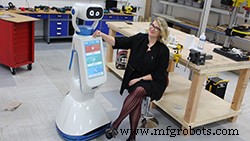
Le Maître 在阅读“神秘岛”时受到启发,成为一名工程师,这是儒勒·凡尔纳 (Jules Verne) 讲述的美国内战逃亡者的故事,他们利用团队合作、科学知识、工程和毅力在一个未知的太平洋岛屿上从零开始建立了一个殖民地。 “这是一个有趣的比喻,说明人们如何能够通过设计新设备来改变世界并使其变得更美好,”她说。让世界变得更美好是贯穿她思想的一个主题:“我坚信,作为工程师,我们有道德义务改变世界,让世界变得更美好。作为人类,通过设计,我们对地球产生负面影响。因此,我们有责任建造可以平衡这一点的东西。我相信,通过专注于绿色 IT、清洁数据中心、节能组件,我们可以创造具有积极影响的设备,让世界变得更美好。”不幸的是,她制造的第一个“积极影响设备”,一个名为 Heasy 的零售和酒店机器人,在 2019 年 10 月一场大火摧毁了这家企业之前,寿命很短。
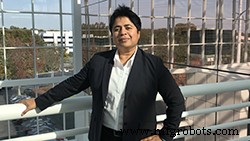
Yakoob 受到来自英国电视节目“Daleks 博士”的外星种族 Daleks 的启发,开始从事机器人和自动化事业。谁”,以及来自“星球大战”电影的 R2-D2 和 C-3PO。 “从那时起,我的迷恋和好奇心一直引导我——通过高中及以后——确定和选择科目和课程,使我越来越接近了解我童年机器人英雄的工作原理。”进入该领域后,她渴望消除机器人和自动化领域仅适用于男性的想法。 “无论你是什么性别,都可以获得成功所需的技能,”她说。 Yakoob 看到她自己和她的机器人在制造业之外的作用,包括医疗保健、酒店和农业:“我想为将机器人技术应用于智能假肢等辅助技术做出贡献,以改善日益增长的老年人口的生活质量。并应用机器人技术和自动化技术实现室内农业,为所有人提供健康、负担得起的食物。”
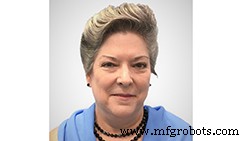
Nelson Shea 以对任何人都有帮助的建议为生:参与贸易组织。对她来说,参与制定机器人安全标准提供了极好的交流机会。显然,Nelson Shea 是一名加入者,是 SME 的终身会员,并享有“很棒的会议、社交和演讲机会”等好处,她说。部分通过她的努力,Nelson Shea 说美国在机器人安全方面处于领先地位。 “我是一个团队的一员,他们深信
自动化可以以一种安全的方式完成,这对于与设备交互的人来说工作良好,同时具有高生产力,”她说。 “我相信拥有强大的机器人安全标准有助于工业机器人市场的成功。”她引用了通用电气全球研究公司机器人技术执行董事 John Lizzi 的话说,还有更多的事情要做。 “我们认为机器人,特别是工业机器人,经历了三个阶段:从作为工具的机器人到作为合作伙伴的机器人,最后到维持我们关心的事物的机器人。”
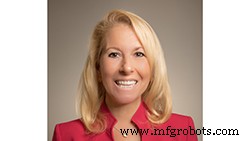
霍克斯发现了人们提前在线订购送货上门的转变。她知道这将是一个主要的增长领域。这让她能够“利用我的途径进入供应链管理,但传统策略并不令人兴奋,”她说。 “创新发生在机器人技术和自动化领域。我想成为其中的一部分。” Hawkes 于 2018 年加入 6 River Systems (6RS),并着手改进其服务和仓库产品。这使得 6RS 在大流行来袭时能够很好地支持其客户。 “我很自豪不仅为提高效率做出了贡献,还为维护客户工作场所的安全和保持供应链的运转做出了贡献,”她说。接下来,霍克斯希望在市场上实现机器人技术和自动化的民主化。 “如果 6RS 可以在大型履行中心、购物中心甚至本地小型企业中建立接触点,”她说,“我会认为这是一项巨大的成就。”
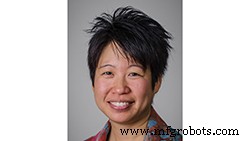
大约八年前,刘开始寻找更有影响力的工作。受到 Willow Garage 的一个项目的启发,该项目使四肢瘫痪的人能够对机器人进行编程,Lau 加入了机器人研究实验室大约一年,随后将她的专业注意力转向了机器人。她与几位 Willow 校友创办了一家服务机器人公司,然后成立了自己的公司。 “虽然我一生都在开发软件,但我意识到机器人技术在改善人们日常生活方面具有巨大的潜力,”她说。 “与仅限于屏幕的软件不同,机器人生活在人类世界中。”如今,Lau 的机器人在建筑工地提供无错误、数据驱动的布局,这些布局源自建筑信息建模软件,提高了工人、设计师和工程师的生产力和生活。 “我们的下一个里程碑是真正扩大我们的机器人产品,使其在美国的每个商业建筑工地上都能使用,”她说。 “与构建第一个原型相比,扩展机器人产品需要不同的技能和不同的组织。”
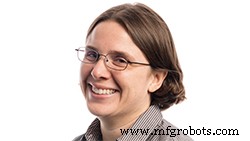
Wise 进入机器人行业是偶然的。 2007 年,她加入了由 Willow Garage 创始人 Scott Hassan 赞助的团队,为 DARPA 城市挑战赛建造了一辆自动驾驶汽车。在这辆汽车在机器人研发公司的停车场自动绕了一圈后,哈桑很快就给了她一份工作。这种真实世界的演示与 Wise 的职业成就相呼应:在她的公司 Fetch Robotics 建造自主移动机器人,在工厂和大容量配送中心发挥作用。 “在机器人技术中,你几乎可以一次在实验室里做任何事情并制作视频,”她说。 “真正的挑战是让它 24/7 全天候工作,可靠性达到 99.99%。这就是客户想要的,而这真的很难做到。”她对下一代女性机器人专家的建议是学习编程并加入一家初创公司。 “女性面临着非常艰难的职业道路,她们需要将自己置于有机会在常规公司结构之外表现出色的环境中,”她说。

Masciantonio 的工作重点是缩小制造业的技能差距。使用 ARM 确定的能力构建模块、技能概况和职业路径,她正在努力创建一个全国性的系统,将制造商所需的能力和角色与劳动力的教育计划和职业路径相匹配。借助 ARM 的系统,学生可以确定他们的优势在哪里,以及他们需要获得哪些能力才能在制造业取得成功。下一步将于今年晚些时候交付,包括测试和认证机器人职业道路工人的能力。 “根据 ARM 的工业 4.0 能力框架,我们将创建机制来创造性地观察和测试他们对能力构建模块的掌握程度,”她说。这将有利于求职者和雇主之间的匹配。 “知道我们每天完成的工作有助于加强美国经济、为我们的战士服务并将我们的国家制造能力提升到更高的成熟度,这感觉很棒,”她说。
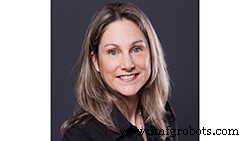
Caron 曾使用法语、英语和捷克语工作和学习。但“不可能自动化”似乎不在她的词典中。事实上,她的团队最近的成就是在检查和消除其他人认为不可能自动化的繁琐任务方面取得了突破。最近的成就可能有助于她的团队实现让所有 GE Aviation 站点在引入新零件或流程时考虑自动化和机器人技术的目标。这将加速它们的采用,并有助于最大限度地发挥它们的潜在影响。 “我们致力于使这些站点能够使用最新技术可靠、高效地构建和维护发动机部件,我们正在为工程改进他们的设计开辟新的可能性,”她说。 “有一种情绪认为我们正在为对这么多人产生影响的技术的进步做出贡献,这是非常有益的。”展望未来,她对人工智能寄予厚望。 “它将解决阻碍自动化和机器人技术适应挑战的复杂问题,”她说。
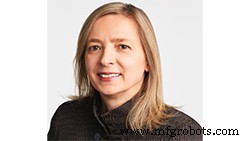
Moneza 对机器如此着迷,以至于她通过在环球影城仔细检查她的骑行工作而不是被动地享受它来找到她的刺激。她说:“我试图穿过黑暗,看看他们使用的是什么类型的机器人,并试图了解让骑行令人兴奋的轨道和投影系统。” “它真的让我很感兴趣,我喜欢看看事情是如何运作的。”那么,她在航空航天工业中看到了钻孔、喷漆、复合材料制造和超声波检测等重复性任务的自动化新机遇,这有什么奇怪的吗?她还希望在数据收集和解释方面看到更多的自动化。 “这将使我们能够及时做出明智的决定,并在必要时对设计和流程进行更改,”她说。即使她对自动化充满热情,她也看到了机器自动化后留下的工人的不利之处。 “这是需要解决的问题,这样我们才能继续竞争并处于制造技术的最前沿,”她说。
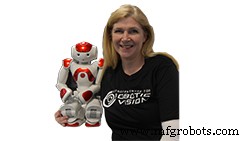
作为一个女孩,Keay 并没有想过从事科技行业——尽管她的家人购买了他们附近的第一台个人电脑。现在,她希望在澳大利亚看到一个蓬勃发展且可持续发展的机器人产业。 “这不仅意味着支持机器人技术和机器人相关技术的创造者,而且还支持政府和企业采用机器人技术,”她说。 “机器人技术是更广泛的人工智能和技术领域的一部分,除非我们更广泛地支持人工智能和技术领域,否则它不可能成功。”六年前,她成立了澳大利亚机器人视觉中心,这是世界上第一个这样的中心。她在 2018 年领导制定了澳大利亚第一个机器人路线图,并于去年成立了一家代表该行业的公司。 2019 年,她的使命是以 Hopper Down Under 的形式将 Grace Hopper 计算机界女性庆祝活动带到澳大利亚。她现在领导着她所在的澳大利亚州的人工智能中心。
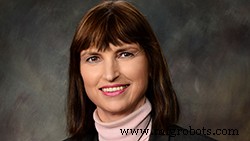
劳达的职业道路证明了实习的价值。在高中时,她的数学老师鼓励她成为一名工程师。但直到她在一家柴油发动机制造商当学徒时,装配线和数控机床才激发了她的兴趣。 “几年后我回到了大学。我渴望成为一名制造工程师,”她说。在农业机械和设备制造商 AGCO 的职业生涯中,她领导了一个工程师小组,该团队创建了一种工具,使美国、意大利和巴西工厂的制造工程师能够远程协作创建制造物料清单,即流程清单以及新收割联合收割机的电子工作说明。 “Many steps within that tool are fully automated, and the concept reduced the planning efforts at the sites up to 80 percent,” she said. “The next big goal is to generate a true digital twin of our factories, by merging the virtual with the real operations, and collect smart data that can instantly be turned into higher productivity, safety and quality,” she said.

When Greiner saw the original Star Wars movie in 1977, she was immediately smitten. The object of her interest was not Luke Skywalker or Han Solo; It was R2-D2. The girl who drew her inspiration from one of director George Lucas’ leading actor bots would grow up to be a pioneer in developing robots that can take over mundane or dangerous tasks from humans. She is now the CEO of a weed-controlling, solar-powered robot startup. She previously co-founded iRobot and co-designed its Roomba robotic vacuum cleaner. Roomba has captured about 20 percent of the North American vacuum market. Other Greiner accomplishments—the Packbot military robot and the persistent aerial reconnaissance and communications tethered drone system—have been credited with saving the lives of soldiers and civilians alike. Greiner predicts we will see robots taking over home maintenance jobs, such as lawn mowing, leaf collecting and snow removal. “I see continued adoption of robots, driving the virtuous cycle of invention, development and manufacture,” she said.
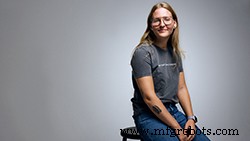
Samsioe sees untapped potential in drones to help solve real-life challenges in natural disasters, disease outbreaks and other situations. For example, GLOBHE’s network of “crowddroning” pilots provide aerial images that, once analyzed, help track mosquito-breeding sites in Malawi for malaria-mitigation efforts. An advanced unmanned aerial vehicle pilot with a master’s degree in international disaster management, Samsioe cites as her company’s most significant accomplishments its work with the United Nations in disease and natural disaster response and a recently signed contract with a global telecom company. The telecom-related work is to inspect communication towers, helping to keep communities connected as a result. Clearly owning her own success, she said, “While many wait for ‘the future’ to happen, I tend to create the future and get partners and clients onboard the journey.” Her frustration is with progress that happens slowly. For example, she’s “pushing and waiting for ‘beyond visual line of sight’ (BVLOS) drone flights to become legal at scale so drones truly can provide additional value for societies.”
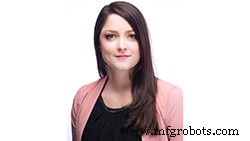
As an If/Then Ambassador for the American Association for the Advancement of Science, Elliott is featured in original entertainment and media content. She was overall runner-up in “The Big Brain Theory’s” one-season run on the Discovery Channel. She was an on-camera science expert for the Science Channel’s “Outrageous Acts of Science.” And she was featured in a 2012 Wired article about a 3D-printing vending machine she and her team designed and configured while studying at Virginia Polytechnic Institute and State University. The machine, DreamVendor, included four MakerBot Thing-o-Matic printers that printed users’ uploaded design files. “Of course, it being a first-generation design, there were several kinks in the system,” Elliott said. “However, it was a really fun project, and it proved the concept.” She has since earned her doctorate in mechanical engineering and wants to bring automation and robotics to additive manufacturing. “Even though the machines can build amazing things, there is still quite a lot of manual labor required after the part is built,” she said.

For Ciprian, working in robotics means solving an evolving, thought-provoking engineering problem. “It is always exciting because you’re constantly doing something new,” she said. “The field is very dynamic, which makes it fun.” It is also productive:She led the electrical design of an automated guided vehicle/industrial robot, which took a year from start to finish. Having fun at work is a bonus for her on top of being able to work in such a multidisciplinary field. “For example, the power architecture is tightly involved with the mechanical loads of the robot,” she said. “Also, losses, emissions, temperature profiles and communication robustness are all interrelated. Moreover, it is a field where I can see our contributions to humankind happening in real time.” The future of industry will include fleets of robots working collaboratively with humans, she believes, with AI playing a more involved role in tasking. Her advice to other female engineers is to be generous:Socialize your achievements and those of your female colleagues, she said.
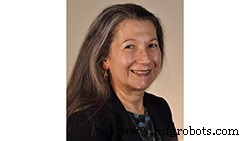
Messina is rooted in measurement science and its role in driving research and engineering—and from there her vision for the future of robotics takes off. She wants to see the paradigm of robots as partners and assistants to humans extended and expanded versus seeing them as worker replacements. For this to happen, the world needs more intuitive interaction mechanisms for programming, coordination and communicating status, as well as greater intelligence and dexterity on the part of robots. “Robots will no longer need to be taught every move, but rather can be instructed at a high level, similar to how humans who collaborate together agree on a joint task,” she said. “Similarly, robots will be able to execute their tasks either independently, able to detect changes or failures and recover from them on their own, or, if working jointly with humans, able to safely perform the tasks through observing the human’s status, understanding verbal and non-verbal cues.” The ultimate result will be the democratization of the use of robotics among enterprises, she said.
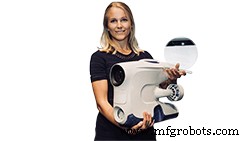
When she had two years left to finish her master’s in engineering and technology management, Spiten began taking extra courses in entrepreneurship and robotics to figure out where she was headed career-wise. “I found the [master’s degree] curriculum to have too little hands-on training,” she said. “How would I know what to specialize in without trying out, and applying theory onto, real problems?” She enrolled in a program that included an internship with a startup making underwater drone kits. She wrote her thesis on environmental ocean monitoring with the use of drones, and her career took shape. “I started Blueye Robotics with three co-founders, to make the ocean available in new ways—and to everyone—driven by the belief that you only take care of what you know and care about,” she said. She is now advising the World Wildlife Fund on ocean plastics. “As Sir David Attenborough once told me,” she said, “it’s not about whether we will survive, but what kind of world we will survive in.”
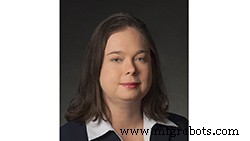
Having earned a master’s in manufacturing engineering, Williams has a wealth of book knowledge. But since at least her undergrad years, her education also included practical experience. It was some of that experience, specifically programming a robot in V++ to perform a simple shape-sorting task, that got Williams her first job at Boeing and ignited her passion for working with robotic and automation systems. “My first job was programming and supporting a gantry robot doing automated fiber placement that used an Adept [Controls] control,” she said. “这非常令人兴奋。” Although her work focuses on controlling robots, she’s also focused on people, including colleagues and the next generation of techies. She has participated in many leadership programs at Boeing, including the Employee Mentoring and Robotics Club. Outside of work, she’s been a FIRST Robotics Competition volunteer for 10 years. Her message to girls in FIRST is to get involved early, stay active and embrace every learning opportunity. “It’s the hardest fun you’ll ever have,” she said.
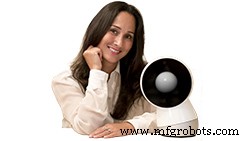
Breazeal once dreamed of being an astronaut. But she instead chose academia where she “could continue to push the envelope in robotics and AI research.” Her work is about autonomous robots as a ubiquitous, human-centered technology. “I want to contribute the reality of a robot in every home that delivers meaningful value and delight to families,” she said. Her biggest accomplishment to date is Jibo, the first social robot featured on the cover of Time. Jibo has since been acquired by another firm. “There is tremendous opportunity for social robots as personalized, helpful companions in education, healthcare, aging and wellness. These are areas where emotional engagement, humanized social support and decision support in a personalized way could help address challenges of scalable, affordable, effective interventions for human users that can augment and extend what human professionals provide,” she said.

Curry appeared headed for a career as a chemist, but as she worked in the lab, she realized fixing broken equipment was more to her liking than running analyses. So she returned to school for industrial electronics. “I was accepted into an internship program at a pharmaceutical nutritional company, which is how I began my career in manufacturing,” she said. “I have been exposed to various types of automation, including robotics, and have enjoyed working in manufacturing for all of my career.” At the pharmaceutical nutritional company, Curry and her team automated hard-wired relay circuitry to PLC systems. This helped improve troubleshooting and reduced repair time. “It was amazing to be part of what was emerging technology at the time,” she said. The fun didn’t stop there. “At Toyota, we have teams working on AI and augmented reality to help improve efficiency and eliminate redundant and non-value-added work,” she said. “I believe this type of technology can be coupled with robots to improve the efficiency of work for employees.”
自动化控制系统


